Popular Mechanics: Building A Deck Without Home Depot
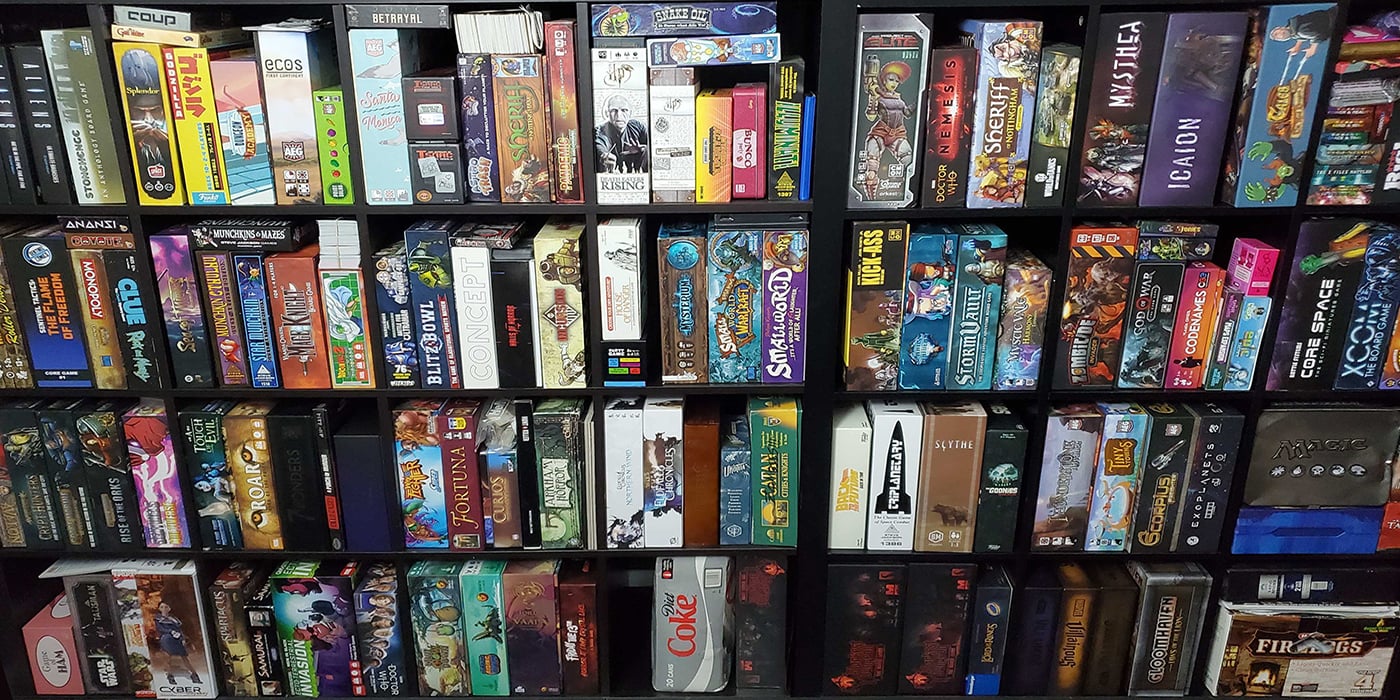

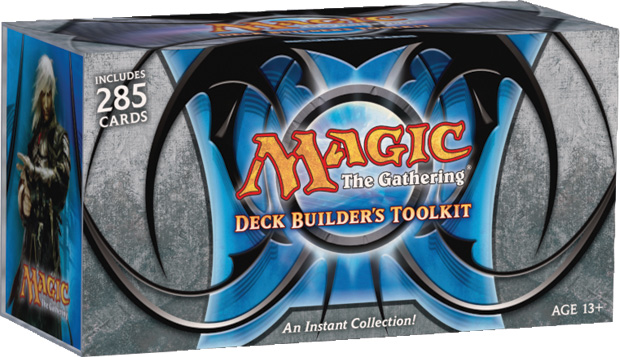
Crafting a finely tuned, self-powered engine or a rapidly destructive machine; The choice is yours when you’re the deck builder.
Heyo, friends!
Welcome back to Popular Mechanics. The series where we dissect various board game mechanics and really try to understand them. The last two chapters we’ve done on Popular Mechanics have been on more abstract mechanic concepts: Betrayal and Randomness. Today we’re tackling a much more concrete mechanic: Deck Building. As always here in Part 1, we’ll be discussing how the mechanic works and breaking it down into its core components. Word of warning, if you’re familiar with deck builders, most of this won’t be new to you.
If you don’t know what a deck builder is or how it works the basic concept is simple enough. Often, you start the game with a specific set of cards, often around 10 cards. Throughout the game you use those cards to acquire more cards and add them to your deck. These cards are meant to be stronger or better in some way. Throughout the game, you are attempting to make your deck as strong as possible to achieve victory, whatever that may be for the specific game.
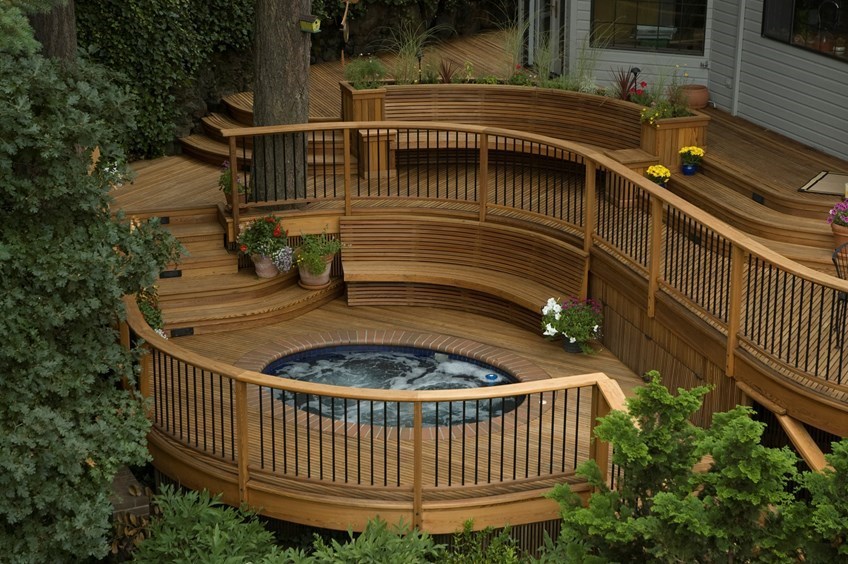 A good foundation is key to any good deck. And an in-ground hot tub.
A good foundation is key to any good deck. And an in-ground hot tub.
Deck Builders are fun because they allow you to really customize your deck to fit your play style. Ideally, there are a variety of cards which will grant a number of different effects, allowing each player to build a vastly different deck than the other players. With a large selection of cards, deck builders can be very replayable, having a variety of ways to play and win.
So let’s go over the basic components of a deck builder and the often used in-game effects the cards have.
Game Locations
Deck: Simple enough. This is your deck that you are building. You draw your card from it and add new cards to it.
Hand: Your hand is the cards you currently have available to use on your turn. Often, you will draw up to a certain number of cards from your deck, up to a certain maximum. During your turn, you will play cards from your hand to activate their effects.
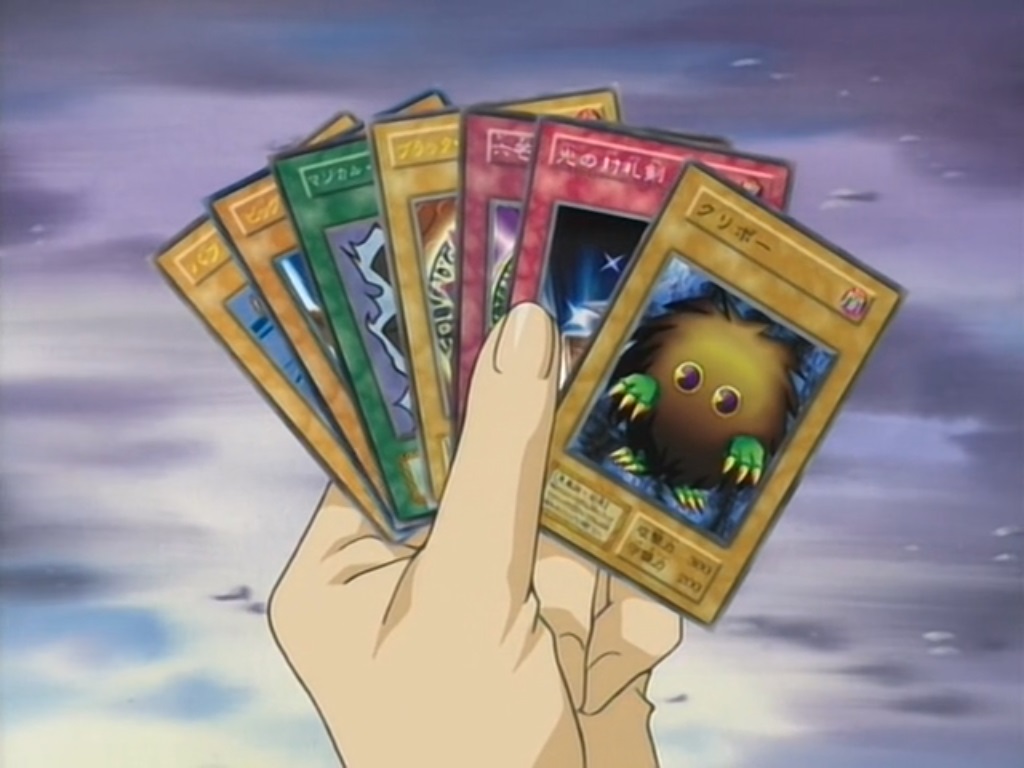 The heart of the cards is not a valid game location.
The heart of the cards is not a valid game location.
In Play: Deck builders will often have an ‘in-play’ area to simplify some weird card interactions. Each time you play a card from your hand it goes into the in-play area. When it does, you gain the effect of the card. Often at the end of your turn, all cards you have in-play and all cards you have remaining in your hand are discarded.
Discard: Your discard is a pile of the cards you have used in previous turns or were forced to discard for whatever reason. Cards in your discard pile are often unusable until your deck becomes empty from repeated draws. Once your deck is empty, your discard pile is shuffled and becomes your deck until the cycle repeats.
Supply: The supply is your selection of new cards that you can acquire throughout the game; the “store” where you buy new cards. You use the cards you start with to buy new ones and add them to your deck. Often, cards bought are added to the discard pile. This means newly acquired cards have to wait for some time before they are shuffled back.
Trash: Some game effects will have a player trash a card or “return it to the box”. This is the ultimate way to remove a card. Cards in the trash are fully removed from the game. They will not cycle back into the deck at any point.
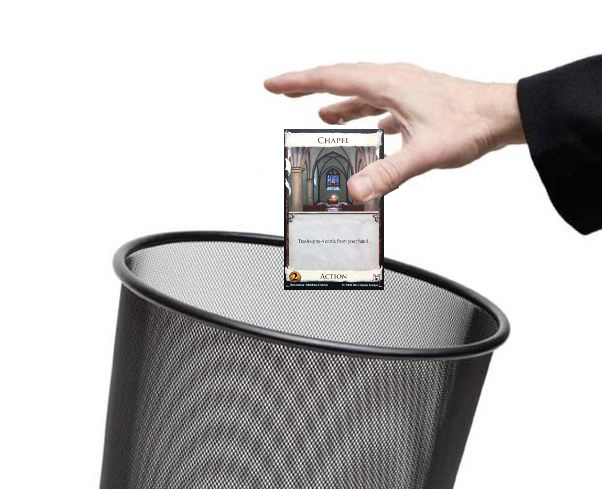 Meta
Meta
Card Effects
In general, those are the different locations throughout a deck builder game. So now let’s look at the cards themselves. What sort of various effects can the cards have?
Money: Deck builders require some sort of currency to function. You have to buy new cards from the supply and as any good capitalist will tell you, you need money to buy things.
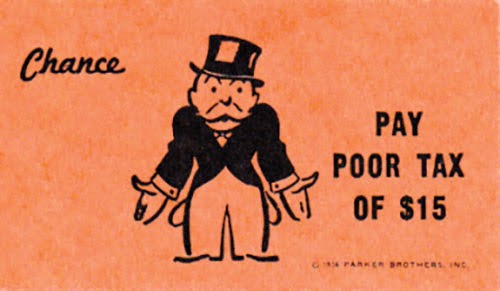
Draw: Drawing additional cards is a common effect in deck builders.
Trash: To Trash a card is to remove it from the game completely.
Discard: Discarding is often a negative thing forced upon a player. In a competitive game, players might force their opponents to discard. This would give them fewer cards during their turn and hopefully crippling any strategy they had ready. In a cooperative game, the game itself might force players to discard.
Cycle: Cycle is a term which is a combination of discard and draw, essentially replacing a card in their hand with a new one. This is best done when a player has a not-useful card and are hoping to draw something more useful for that turn. Cycling does not increase the number of cards in your hand. Therefore, cycling is a less powerful and therefore more common effect than simply drawing.
Victory Points / Damage: Games require a method of victory. Most deck builders have either victory points or damage cards. Victory points are more often used in competitive games, while damage cards are more often used in cooperative games. Many cooperative deck builders have a theme of the players taking the role of heroes attempting to defeat monsters or villains. The players use their damage cards to defeat the monsters and get closer to victory.
Sticky Cards: A lot of deck builders have some form of card which is forcefully placed into your hand or deck and are generally bad to have. I’m calling these cards Sticky Cards. They are usually wounds, curses or monsters or similar and often have little or no game effect. Their only function is to take up the limit amount of space that you have in your hand. If you have a hard limit of 5 cards and 2 of those cards are sticky cards, you only get to draw 3 actually useful cards.
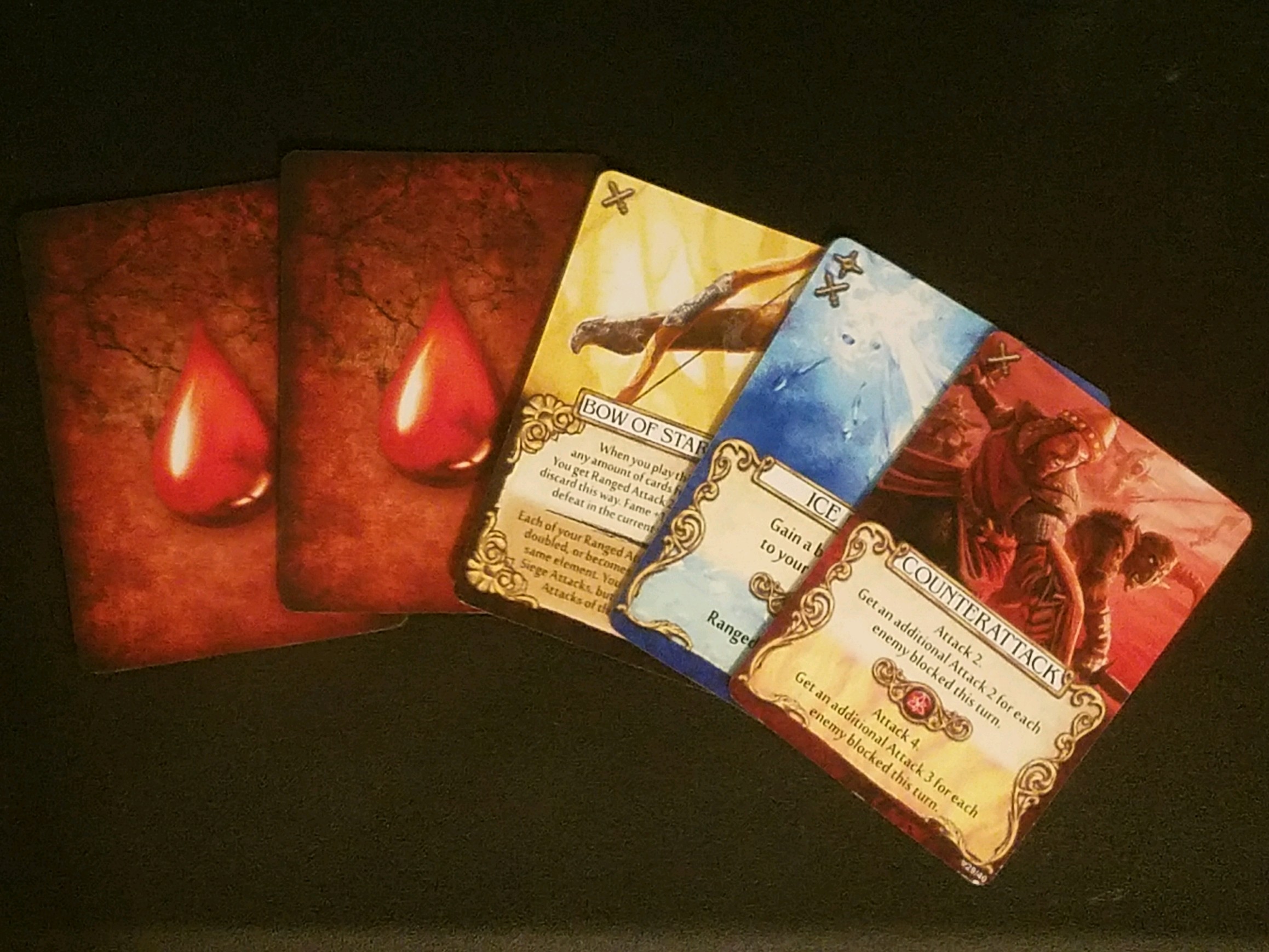
Other Effects: One of the great things about deck builders is how open ended they are. There are so many possible game effects. The only limiting factor is the game in which they are contained. Trying to list them all would be a futile effort, so I’m not going to try. There are near unlimited possible card effects and trying to list or categorize them all would take more time than I have (you know, with deadlines and all).
Deck Builder Strategy
Drawing is Great
At first glance Drawing might seem underpowered; spending 1 card to draw 1 card. If you hadn’t drawn the card-drawing card, you would have drawn that second card anyway, making the card-drawing card pointless, right? At that point, that’s correct. You’re not gaining anything. However, most powerful cards in deck builders have multiple effects. So if I have a card which grants an additional draw and 2 currency, then I’m clearly in a much better position. Drawing in deck builders can be an extremely powerful effect. Imagine every card in your deck did some minor effect and let you draw an additional card. You could draw your entire deck and have amassed a huge amount of resources playing all those cards.
Thin Is In
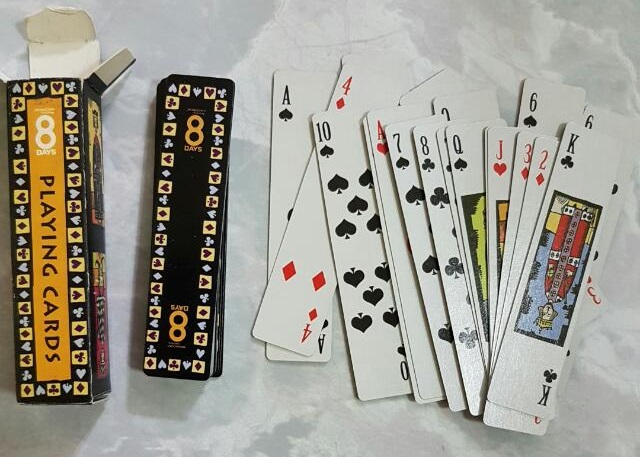 No… that’s not what I meant.
No… that’s not what I meant.
To players new to deck builders, trashing seems like a silly thing to do. Why get rid of cards in your deck? Aren’t they all helpful? Well, yes, usually. But the idea is your deck is going to fill up with all different cards, some stronger and more useful than others. So as your deck grows, it is in your best interest to cull the herd, remove those weaker cards and keep your deck thin. A thin deck with only your best cards, is going to give a strong turn every time.
The best deck builder players know which cards to trash, but more importantly, when to trash them. Trash a card too early and you’ve weakened your deck too much too early. Trash a card too late and you’ve already slowed yourself down too much by having to draw the weaker card several times. At the end of the day, there’s no right answer. It depends on the game, the player and their strategy.
Don’t Be Sticky
Sticky cards serve their annoying purpose best when you ignore them. As they build up in your hand, things get worse and worse for you. Having 1 in your hand is often no big deal, but as you draw a second or third you’ve suddenly gone from being pestered to being in a really bad spot. Depending on how the game functions, it might take a couple turns to clear your hand of the sticky cards. So it is almost always better to use the next available opportunity to get rid of the sticky card as soon as you can.
 Will Smith providing a good counter example. Don’t be like Will.
Will Smith providing a good counter example. Don’t be like Will.
Final Thoughts
If you have played deck builders, this article probably didn’t bring a lot of new information to your table. But if we’re going to be tackling deck building on Popular Mechanics, I want to make sure everyone’s caught up. In the rest of this chapter, I’m going to be using these terms a lot and want to make sure everyone’s on the same page.
In Part 2 of this chapter, we’ll be going over various deck builders games and some games which have a deck builder mechanic. We’ll discuss why they are good deck builders and what they do right and also in what ways they could improve.
Thanks for reading!
When you’re deck building, Redwood and Cedar are your best options, hands down.




